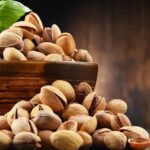Understanding the Role and Composition of Fuet
Fuet, a type of cured sausage, has been gaining significant popularity across Spain, cherished by many households for its exquisite taste. Made primarily from lean pork meat, cured and dried before being sliced, this delicacy is commonly enjoyed as a tapa or paired with tomato bread. Originating from Catalonia, one of its distinguishing features is the white layer covering it, which is a mold intentionally cultivated during the drying stage. This mold prevents the growth of other harmful molds, enhances the flavor, and provides an additional aromatic touch.
The white mold on fuet can develop naturally or artificially. In the natural process, a curing chamber with existing mold is used, allowing the fuet placed inside to develop the mold naturally. However, this method lacks precise control. Alternatively, artificial cultivation involves introducing the fuet into a mold-free curing chamber and coating it with a liquid containing spores of the desired mold before placing it inside. This method allows for better control over mold growth through regulating humidity and temperature during drying and maturation.
Contrary to popular belief, the white powdery substance on fuet is not flour, making it safe for consumption even for individuals with gluten intolerance or celiac disease.
Understanding White Spots in Fuet and Other Cured Meats
Upon slicing fuet, one may notice white spots within it, prompting curiosity about their origin. These spots are crystallizations of an amino acid known as tyrosine, commonly found in various cured meats like fuet. Tyrosine, one of the twenty amino acids composing proteins, is abundant in pork meat and is released during the drying and maturation process. As the meat dehydrates, tyrosine crystallizes, resulting in the distinctive white spots observed in cured meats. The presence of these spots indicates the quality of the product.
A Word of Caution: Consumption and Nutrition
Following chorizo, fuet ranks as the second most consumed cured meat in Spain, prized for its flavor and convenience. However, due to its ingredients, it should be considered an occasional indulgence. Its high calorie content, coupled with significant levels of saturated fats and salt, necessitates moderation in consumption. While fuet may serve as a convenient snack or appetizer, care should be taken regarding portion sizes. When used in sandwiches, it’s easy to consume large quantities, but it’s advisable to enjoy a few slices with bread and complement the snack with other healthy foods like fruits.
However, not all fuets are created equal. It’s advisable to check the nutritional information on the label, prioritizing those with higher protein content and lower fat and salt levels.
Manufacturers typically recommend a serving size of around 30 grams, equivalent to approximately six thinly sliced pieces. With this portion size in mind, a serving provides between 0.96 and 1.5 grams of salt, 9.9 and 12.75 grams of fat, and 126 and 145 kcal. Therefore, caution is advised to avoid excessive consumption.
Consuming the Casing: Natural vs. Artificial
A common query regarding cured meats, particularly fuet, pertains to consuming the casing. Fuet can be encased in different types of casings, including natural (typically pork) casings, which are edible, and artificial casings, which, while suitable for food use, are not recommended for consumption. This distinction is clearly indicated on the packaging, allowing consumers to make informed decisions. Whether to consume the casing, natural or artificial, is a personal preference. However, experts suggest thicker slices for tender fuets and thinner slices for drier ones. Natural casing adds a crunchy texture and enhances flavor.
In conclusion, fuet, with its unique characteristics and flavors, continues to captivate palates across Spain, offering a delightful culinary experience when consumed in moderation and with proper awareness of its nutritional aspects.











